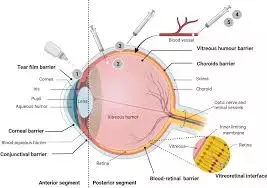- Home
- Medical news & Guidelines
- Anesthesiology
- Cardiology and CTVS
- Critical Care
- Dentistry
- Dermatology
- Diabetes and Endocrinology
- ENT
- Gastroenterology
- Medicine
- Nephrology
- Neurology
- Obstretics-Gynaecology
- Oncology
- Ophthalmology
- Orthopaedics
- Pediatrics-Neonatology
- Psychiatry
- Pulmonology
- Radiology
- Surgery
- Urology
- Laboratory Medicine
- Diet
- Nursing
- Paramedical
- Physiotherapy
- Health news
- Fact Check
- Bone Health Fact Check
- Brain Health Fact Check
- Cancer Related Fact Check
- Child Care Fact Check
- Dental and oral health fact check
- Diabetes and metabolic health fact check
- Diet and Nutrition Fact Check
- Eye and ENT Care Fact Check
- Fitness fact check
- Gut health fact check
- Heart health fact check
- Kidney health fact check
- Medical education fact check
- Men's health fact check
- Respiratory fact check
- Skin and hair care fact check
- Vaccine and Immunization fact check
- Women's health fact check
- AYUSH
- State News
- Andaman and Nicobar Islands
- Andhra Pradesh
- Arunachal Pradesh
- Assam
- Bihar
- Chandigarh
- Chattisgarh
- Dadra and Nagar Haveli
- Daman and Diu
- Delhi
- Goa
- Gujarat
- Haryana
- Himachal Pradesh
- Jammu & Kashmir
- Jharkhand
- Karnataka
- Kerala
- Ladakh
- Lakshadweep
- Madhya Pradesh
- Maharashtra
- Manipur
- Meghalaya
- Mizoram
- Nagaland
- Odisha
- Puducherry
- Punjab
- Rajasthan
- Sikkim
- Tamil Nadu
- Telangana
- Tripura
- Uttar Pradesh
- Uttrakhand
- West Bengal
- Medical Education
- Industry
Initiation of IOP reduction therapy fails to improve Visual field status in glaucoma patients: Study

Initiation of IOP reduction therapy fails to improve Visual field status in glaucoma patients suggests a study published in the American Journal of Ophthalmology.
Evidence to support the hypothesis that visual field (VF) status can improve after initiation of intraocular pressure (IOP) reducing treatment is controversial. We take advantage of participant eligibility data from the United Kingdom Glaucoma Treatment Study (UKGTS) to test this hypothesis in newly diagnosed glaucomatous patients randomised to IOP lowering therapy or placebo. Newly diagnosed open-angle glaucoma patients in the UKGTS with eligibility and baseline data (n = 202 and n = 205 participants from the treatment and placebo groups, respectively). UKGTS eligibility data, including two reliable VFs (Humphrey 24-2 SITA Standard) and IOP measurements were compared to UKGTS trial baseline data acquired after allocation to treatment (topical prostaglandin analog) or placebo eye drops. Mean change in VF mean deviation (MD) and proportion of eyes that improved MD by more than different thresholds were compared across this interval in the treatment and placebo groups. Secondary analyses included stratifying the groups by level of IOP, level of VF loss and age along with pointwise analyses including change in subsets of VF locations.
Main outcome measure. Results: Mean (standard deviation [SD]) time between eligibility/baseline visits and reduction in IOP was 12 (3) weeks and 4.8 (4.2) and 1.0 (3.6) mmHg for the treated and placebo eyes, respectively. Mean (SD) change in MD was almost the same for the treated (-0.03 (1.45) dB) and placebo groups (+0.08 (1.72) dB) (P=0.47). Proportion of participants with an MD improvement of 1 dB or more were similar for both groups (P=0.25). No association was found between MD improvement and magnitude of IOP lowering. Stratifying data by IOP, level of VF loss and age did not reveal any differences between the treated and placebo groups and neither did any of the pointwise VF analyses. Initial short-term VF changes in the treatment and placebo arms of UKGTS were the same. In these newly diagnosed patients (non-advanced glaucoma) we found no evidence to support the hypothesis that VF status improves after initial lowering of IOP by medical therapy.
Reference:
Peter F. Reddingius, Stephen R. Kelly, Giovanni Ometto, David F. Garway-Heath, David P. Crabb. Does the visual field improve after initiation of intraocular pressure lowering in the United Kingdom Glaucoma Treatment Study?, American Journal of Ophthalmology. 2024, ISSN 0002-9394. https://doi.org/10.1016/j.ajo.2024.08.023. (https://www.sciencedirect.com/science/article/pii/S0002939424003842)
Dr. Shravani Dali has completed her BDS from Pravara institute of medical sciences, loni. Following which she extensively worked in the healthcare sector for 2+ years. She has been actively involved in writing blogs in field of health and wellness. Currently she is pursuing her Masters of public health-health administration from Tata institute of social sciences. She can be contacted at editorial@medicaldialogues.in.
Dr Kamal Kant Kohli-MBBS, DTCD- a chest specialist with more than 30 years of practice and a flair for writing clinical articles, Dr Kamal Kant Kohli joined Medical Dialogues as a Chief Editor of Medical News. Besides writing articles, as an editor, he proofreads and verifies all the medical content published on Medical Dialogues including those coming from journals, studies,medical conferences,guidelines etc. Email: drkohli@medicaldialogues.in. Contact no. 011-43720751


